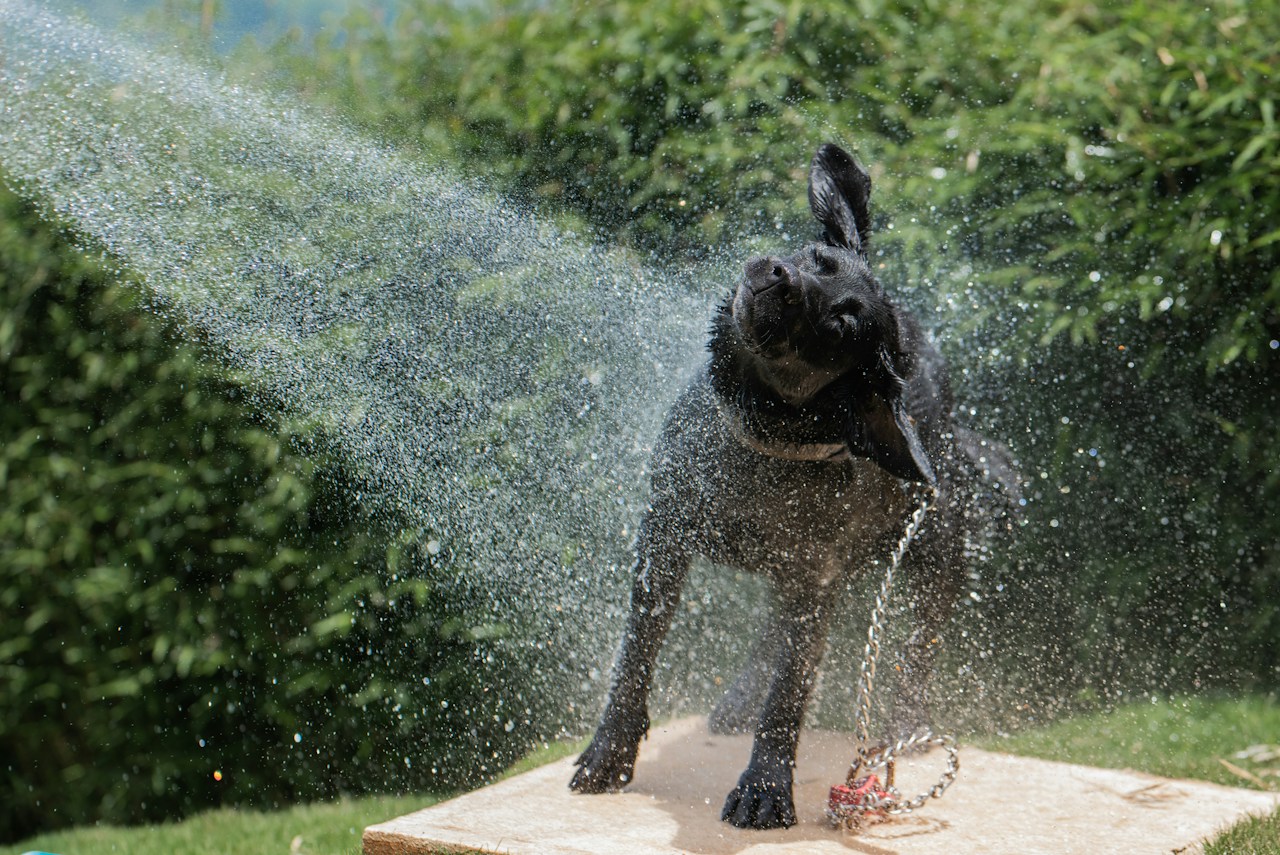Dogs and humans are much more alike than we usually think. And unfortunately, that means that we also share some diseases, such as diabetes mellitus, both type 1 and type 2. This disease is characterized by elevated blood glucose levels. Next, we are going to detail what symptoms of diabetes in dogs should make us suspect that our dog has this pathology. We must seek veterinary assistance to balance glucose and avoid the complications derived from its increase.
What is diabetes in dogs?
Diabetes is a common disease in dogs. It can be type 1 or type 2:
- Insulin-dependent or Type I diabetes. In these cases, the body is no longer able to produce insulin, the disease arises from progressive destruction of the beta cells of your pet’s pancreas. This is the most common in our furry companions and is usually caused by cases of pancreatitis (inflammation of the pancreas)
- Non-insulin-dependent or Type II diabetes. In it, your pancreas can continue to produce insulin at normal levels, but the rest of your tissues, liver, and muscles are less sensitive to it. This disorder appears when the body becomes resistant to insulin, it is less common in dogs, but more common in people and cats. Among the predisposing factors to suffer from this type of diabetes are: obesity, genetic predisposition, and sedentary lifestyles.
Insulin works by helping glucose enter cells throughout the body, where it undergoes different processes to produce the energy necessary for the body to function.
Normally, blood glucose levels are high after eating (postprandial hyperglycemia), until the pancreas secretes the necessary insulin, and glucose levels fall because it has entered the cells.
However, in this disease, we obtain chronic fasting hyperglycemia, that is, constant high blood glucose levels without having eaten , because no insulin can introduce it into the cells to be used by the body.
When there is no insulin, the cells cannot detect that there is glucose, but they detect that they are not receiving it and send signals to produce more glucose.
This causes more fat and protein to be burned to produce glucose. The body accumulates this glucose, which the cells are not able to consume due to insulin deficiency and it ends up leaking into the urine, dragging a large amount of water with it.
What dogs can suffer from diabetes?
This disease can affect any dog, but a higher incidence has been found in some breeds such as the Golden Retriever, Poodle, Dachshund, Pinscher, Westy and Schnauzer, among others. So there seems to be a genetic predisposition .
In addition, it affects females to a greater extent, especially while females (not spayed/neutered females). The age of onset is between six and nine years old and the older our furry, the greater the risk of them suffering from diabetes.
Some Symptoms of diabetes in dogs
Among the different symptoms that we can appreciate in the face of what is colloquially known as a rise or fall in sugar, it is worth highlighting :
- Glycosuria , which is the presence of a large amount of glucose in the urine.
- Polyuria , the dog urinates in large quantities due to glucosuria, since glucose drags more water in the kidneys due to an osmotic diuresis.
- Polydipsia , when urinating so much, the loss of fluids is compensated with an increase in water intake, to avoid dehydration.
- Polyphagia , the increased appetite at first is due to the dog not being able to metabolize enough glucose. Subsequently, this is lost to the extent that the animal suffers from malnutrition.
- Weight loss and muscle loss due to protein catabolism.
- When the disease is advanced, it can affect all organs and produce symptoms such as lethargy , vomiting , weakness and, in the most severe cases, coma.
- Associated complications include cataracts, kidney and neurological problems, urinary tract infections, or high blood pressure .
What is diabetic ketoacidosis?
It is a disorder that arises as a consequence of severe hyperglycemia , either due to undiagnosed chronic diabetes or insufficient insulin dosage. It produces the accumulation of ketone bodies in the blood. Ketones are products of the metabolism of fats, the body uses them because it does not have glucose for energy.
Its symptoms are general weakness, vomiting, rapid breathing, and the smell of acetone on the breath . It is an emergency, the dog must be taken to the veterinary center immediately, as it is at high risk of death.
How is diabetes diagnosed?
To confirm that the clinical signs correspond to this disease, it is necessary to perform a blood and urinary analysis . In the first, we will detect fasting hyperglycemia, moderate elevation of liver enzymes such as ALT and alkaline phosphatase, hypercholesterolemia and hypertriglyceridemia. On urinalysis, glycosuria, proteinuria, and depending on the severity, possibly also ketonuria will be detected.
Also, fructosamine levels can be determined, a protein that reflects the glycemia of the last 3 weeks, and that in diabetic dogs will be elevated. Exercise daily, as it increases the absorption of insulin.
Treatment of diabetes in dogs
It is important to keep in mind that the control of diabetes in dogs is completely different from that in human medicine . For this reason, despite being familiar with the disease, either because we know it or even suffer from it, we will always follow the veterinarian’s recommendations.
Treatment focuses on two basic pillars, which are food and medication.
Under the objectives of making symptoms disappear, avoiding complications of the disease (ketoacidosis, cataracts), controlling risk factors (obesity, right-handed in females, chronic infections) and avoiding hypoglycemia. The dog, in the case of insulin-dependent diabetes, will need us to administer insulin daily to compensate for the one that his body cannot produce. If we are rigorous with the treatment, the dog can lead a normal life.
Veterinary control must be exhaustive because each dog will need a different amount of insulin and even the doses will vary throughout the life of the same dog. For this reason, at the beginning of the treatment, the veterinarian will have to control the glucose levels of the dog to see when the maximum and minimum are produced . With all the information, the dose is adjusted and it is decided when to administer the medication.
Insulin administration precautions
The consequences of an inadequate administration of insulin can be serious , so it is essential that we follow the instructions of the veterinarian to the letter regarding the amount and type of insulin, its conservation, the frequency of administration or the type of syringes.
If we overdose, glucose can drop to alarming levels. This hypoglycemia causes confusion, sleepiness, tremors, staggering, seizures, and even coma.
Diet and diabetes
It is recommended that a diabetic dog consume a dry or wet diet with a high fiber content, low in fat, rich in protein, hypocaloric and with slow assimilation complex carbohydrates and low glycemic index , because they reduce the possibility of that triggers hyperglycemia. This is because they minimize glucose fluctuations after each intake and we will largely avoid the stimulation of the beta cells of the pancreas.
For sale in veterinary clinics we will find this type of food in different presentations. If we prefer a homemade diet, we must prepare a menu with the vet . In any case, the food should be administered in two or three daily intakes to avoid hyperglycemia after a large intake.
Finally, the insulin dose is calculated based on the daily calorie requirements, which depend on the weight of the dog and the activity it develops. That is why it is important that we do not vary the amount of food we offer each day. In addition, the dog must exercise daily, as it increases the absorption of insulin.
Obesity in diabetic dogs
In addition to a diet adapted to the dog’s disease, it is essential that we avoid being overweight. Obesity negatively affects health, complicates diseases, predisposes others, or makes anesthesia difficult. In the case of diabetes, it reduces the response to insulin, making it difficult to control.
Therefore, if the dog is overweight, in addition to treatment for diabetes, the veterinarian will determine its ideal weight and prescribe a suitable diet to achieve it. Weight reduction should be gradual (2-4 months), managing around 60-70% of the caloric requirements for your ideal weight. At present, specific feeds are available for these disorders.
Lean diabetic dogs
If the dog has already lost weight by the time diabetes is diagnosed, it is important that it return to its ideal weight and also regain its muscles, since in many cases protein catabolism ends up producing significant amyotrophy . To achieve this, low fiber diets are recommended because they contain a higher caloric density. We can also find them for sale.
What is the relationship between sterilization and diabetes?
As part of the treatment of diabetes, the veterinarian can recommend sterilization in the case of females, that is, the removal of the uterus and ovaries, by surgery. This is because progesterone has a hyperglycemic effect .
Prognosis of diabetes in dogs
The prognosis of this pathology will depend on each case. In addition, factors such as the owner’s ability to follow the prescribed treatment, the ease or not to control glucose levels, and the presence or absence of other diseases play a role.
Diabetes monitoring
During the first month, it is recommended that the check-ups be weekly , later they could become monthly until good control of the disease is achieved and once achieved every 3 months. In them, symptoms, glycosuria and ketonuria, physical examination, punctual glycemia (6-8 h post insulin), and glycemic curves are taken into account, fructosamine measurements can also be added.
It is considered that there is good control of the disease when our furry does not show symptoms, maintains its stable weight (once the ideal weight has been reached), glycosuria is weakly positive and the values of both glycemia and fructosamine are within the standardized ranges.
When the disease is not well controlled, especially if high doses of insulin are being used. There may be a Somogy Effect (hyperglycemia secondary to hypoglycemia due to insulin overdose), shortening of the action of insulin, or even the appearance of insulin resistance, generally associated with infections, concurrent diseases, right-handedness, or certain pharmacological treatments.
Fortunately, a diabetic dog with proper treatment, and proper veterinary controls, will be able to have a perfectly normal quality of life, and longevity equal to that of a dog without the said disease.


